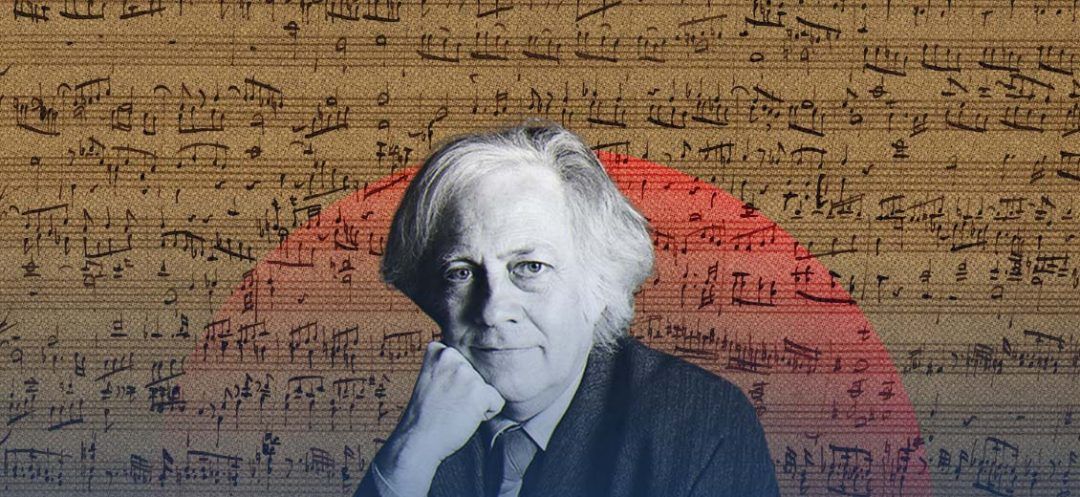
Considered a major figure in contemporary French music, Gilbert Amy continues to shine at the dawn of his eighty-eighth year. From his residence in Courbevoie, he invites us to explore his musical universe by revisiting the past and contemplating the present and future of Western art music.
In his warm Courbevoie residence, just minutes from Paris, Gilbert Amy descends the stairs with youthful energy. Though he has just celebrated his eighty-eighth spring, his spirit radiates a timeless freshness. One might almost believe he belongs to eternity.
"The gardener has turned my garden into a real paradise," jokes the composer, whose works have profoundly influenced Western art music in the second half of the 20th century up to the present day. "Come, let’s settle in my office," he proposes, indicating the way. In this room, an old yet magnificent Steinway grand piano majestically stands, the very one on which the French master has composed avant-garde works destined to mark their era. Perhaps even beyond. A moment of silence ensues. The expressive gaze of the octogenarian with piercing sapphire-blue eyes seems to trace, in these suspended moments, the chapters of a long and rich history.
Intimacy of Music
As decades swirl in the ocean of his eyes, Gilbert Amy breaks the silence and asks nostalgically, "How is Lebanon?" The composer visibly retains a vivid memory of his stay in the land of the cedars, marked by his participation in the Jeita Grotto Festival in 1971. "This resurgence of grave tensions in the Middle East deeply concerns us," he continues. With this aside, it is time to delve into the intimacy of music. Over the centuries, the classical music scene has been shaped by eminent figures whose influence has been crucial in the stylistic, aesthetic, and formal evolution of this art. From Bach to Beethoven, Chopin to Rachmaninoff, Debussy to Stravinsky, Bartók to Boulez, and Schönberg in between, each period has seen the emergence of exceptional talents, contributing to the perpetual enrichment of the musical repertoire. Among this lineage of visionaries, Gilbert Amy stands out as a central figure in the evolution of contemporary atonality.
Golden Age of Music
A disciple of Olivier Messiaen, Darius Milhaud, and Simone Plé-Caussade, among others, Gilbert Amy first immersed himself in the works of Béla Bartók and Igor Stravinsky before turning to the innovations of the Second Viennese School. Inspired by the avant-garde ideas of the 1925 generation, including Karlheinz Stockhausen, Luigi Nono, and, of course, Pierre Boulez, he embraced the atonal revolution that marked the schism between Western art music and the tonal harmonic system.
This radical break aimed to free sound from the "constraints" that had "restricted" it until then. "Tonal music represents the golden age of music, but we can no longer return to it," Gilbert Amy asserts categorically. A member of the Académie des Beaux-Arts, he has been a key player in exploring and disseminating serial music techniques, providing both a sharp critique of traditional conventions and a significant contribution to the evolution of postmodern musical language.
Lame Feet
"My music results from a crossroad — not in a pejorative sense, but categorical — between various styles. In my youth, I was profoundly influenced by symphonic music. My father took me to concerts, so I immersed myself in the great classical, romantic, and a bit of 20th-century repertoire," Gilbert Amy recounts.
When he resolved to dedicate his life to composition, he "experimented" with more or less classical forms, composing a piano concerto and an overture. However, these attempts seemed futile, as he did not yet possess the essential tools for their full realization. "When I acquired these tools through studying harmony, counterpoint, and fugue, I realized we were living on lame feet. I was studying extremely tonal music, yet my compositional aspirations had nothing to do with this style," he notes, emphasizing: "I realized that our contemporary era was unbalanced because we were doing classical studies that ultimately led to nothing concrete in terms of creating new music."
Scholastic Logic
The composer eventually equipped himself with a palette of tools, which he has put "as much as possible" at the service of hybrid music with multiple influences. On one hand, he draws from the French tradition — following in the footsteps of Claude Debussy and Olivier Messiaen — characterized by harmonic richness and timbral finesse, with a central role played by orchestral color exploration. On the other hand, he is inspired by the German tradition of the Second Viennese School (represented by Arnold Schönberg, Alban Berg, and Anton Webern), which makes a radical break with tonality to explore serialism and a new form of expression, redefining musical structures through atonality and formal innovation.
"I chose the adventure and then met Olivier Messiaen, who opened my eyes to hybridization. He taught me that there is not just one music, but a multitude of musics. And sometimes, these musics intersect. It was a new way of understanding music as a reservoir of processes that have evolved over time and have never completely settled into a scholastic logic," explains the composer.
[readmore url="https://thisisbeirut.com.lb/culture/289565"]
Read more





Comments